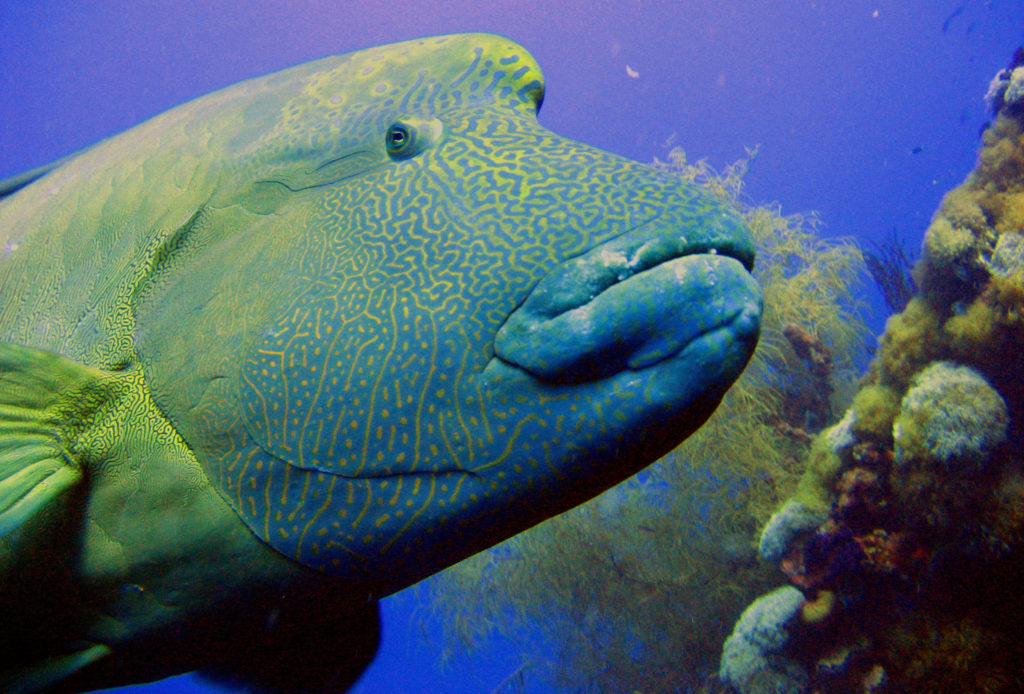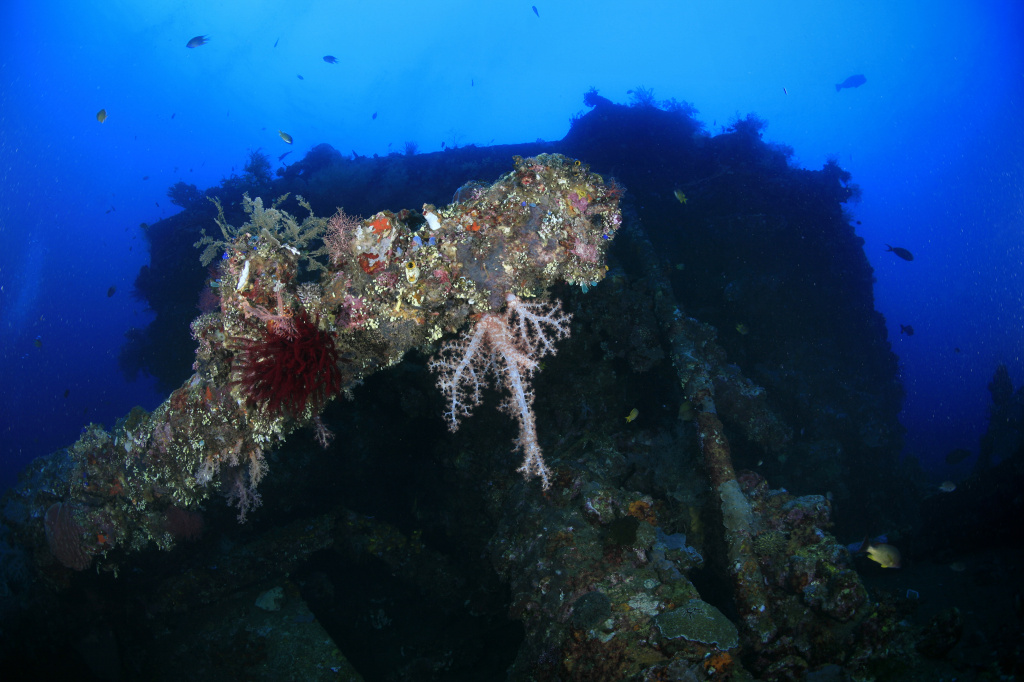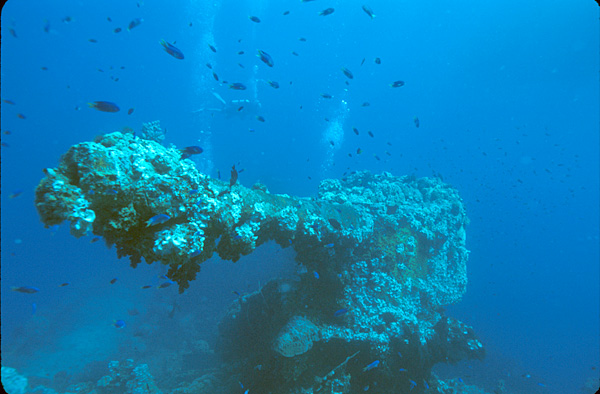Many wrecks become artificial reefs, and divers appreciate the diversity of marine life we can find there. But you can admire fish and coral on many dives, so what is it that makes wreck diving so special? On wrecks you not only get to admire impressive structures with a backstory, you also get to see them from various unique angles. If you love diving these structures as much as we do, here are four must dive wrecks you can’t miss.

SS Yongala
Where is it?
The SS Yongala, once a steel passenger and freight steamer, navigated right into a cyclone and sank off the northeast coast of Australia in 1911, somewhere between the towns of Ayr and Townsville. To visit the wreck, you can either take a 30-minute boat ride from Ayr or a 3-hour boat ride from Townsville. Either way, prepare for a windy ride. Do your research and book with a reputable operator that works around currents, which can be too strong for diving.
What makes it one of our must dive wrecks?
Only found in 1958, the Yongala is still very much intact. Divers consider it one of the world’s best wreck dives, protected by Australian legislation. Admire the 358-foot (109 m) uncompromised ship. Check out the still-recognizable steam room, rudder, masts and toilets. Do not touch anything and certainly don’t take any souvenirs with you, though.
The wreck sits in waters from 50 to 108 feet (15 m to 33 m), so most dive centers will only take those with an advanced certification. You may also have to negotiate some tricky currents on this dive. Open-water divers needn’t miss out though; dive centers in Ayr and Townsville offer the Advanced Open Water course and will be happy to introduce you to the SS Yongala when you complete it.
When to go?
Although you can dive the Yongala all year, your experience will vary depending on when you go. Go during the Southern Hemisphere’s winter and you’ll need a 5 to 7 mm wetsuit to keep warm in the 70 to 77 F (21 to 25 C) waters. But reap winter’s benefits: great visibility and the chance to see mantas and humpback whales. In the summer, you’ll enjoy 82 to 95 F (28 to 35 C) water and swim among large schools of tropical fish. No matter when you visit, wear a full wetsuit to protect against jellyfish stings.

USAT Liberty
Where is it?
Bali’s most famous dive site, the USAT Liberty is also one of the world’s must dive wrecks. And it’s just a quick 130-foot (40 m) swim from the shores of Tulamben. If you enjoy the quiet, you can stay in Tulamben and dive with one of the operators there. If fast-paced is more your vacation style, stay in the touristy south of Bali where many dive centers are based and offer pick-up and drop-off service to Tulamben.
What makes it one of our must dive wrecks?
Spanning 394 feet (120 m), this former cargo ship is impressive, yet accessible. Divers can circle the whole vessel and check out the still-intact cargo room in one or two dives. The Liberty was torpedoed by a Japanese submarine in 1942 and then towed to shore, where Mount Agung’s volcanic activity ultimately pushed the wreck back into the sea. What does that mean for you? The site is not a war casualty and wreck penetration is allowed. Further, penetration does not pose much risk in this case, as the ship is broken down the middle and is easy to navigate. So go ahead, newly certified wreck divers: bring your reel and practice.
Currents here are rare and very forgiving. The Liberty sits between 10 and 100 feet (3 and 30 m), so this site is great for both open water and advanced divers — no wonder it’s one of Bali’s most popular sites.
When to go?
Conditions are consistently easy year-round. Waters are usually a balmy 82 F (28 C), so you will feel comfortably cozy in a 3 mm wetsuit.
SS Thistlegorm
Where is it?
Sunk by German bomber planes in 1941, this British Merchant Navy ship now rests in the Red Sea near Ras Muhammad. It’ll take you four hours by boat to reach the wreck via dive centers operating in Sharm el-Sheikh. It’s far easier, however, to dive the Thistlegorm via liveaboard. This way you can beat the crowds (which are plentiful) and make the most out of your 8-hour round-trip journey. Set aside a few days since it will take more than just a few dives to see the whole wreck.
What makes it one of our must dive wrecks?
At 413 feet (126 m) long, there is a lot to see. Although Jacques Cousteau did take some artifacts with him when he discovered the wreck in the 1950s, including the ship’s bell, there is still plenty here: trucks, motorcycles, locomotives, rifles, boots, etc. Although the German bombing destroyed the middle of the ship, what remains is expansive. Fantastic visibility allows you to admire much of its structure at once. If you are wreck certified, bring your reel and light to penetrate the holds.
With depths of 52 to 105 feet (16 to 32 m) and sometimes-strong currents, it’s best dived with an Advanced certification. Do take care to choose a reputable operator who does not moor to the wreck, as this is causing irreparable damage.
When to go?
The dive season runs year-round and you can expect the water to be 72 to 82 F (22 to 28 C). Bring either a 3 mm or 5 mm full wetsuit, depending on your ability to tolerate cool water.

Chuuk Lagoon
Where is it?
Chuuk Lagoon also known as Truk Lagoon, belongs to the Federated States of Micronesia. Part of Chuuk State, it’s one of many Caroline Islands in the central Pacific. Located closest to Papa New Guinea — and by “close,” we mean a little over 1,000 miles away — it is not easy to get to. But the trek is well worth it. You can dive a full week in Chuuk and never come close to seeing it all — there are too many must dive wrecks here to name. Spend your time here on a liveaboard with a flexible schedule. Or stay at a simple resort on the beach and take a short boat ride out to the sites.
What makes it one of our must dive wrecks?
In Chuuk you can dive more than 45 shipwrecks, 250 sunken aircraft, and even a submarine. All were sunk during Operation Hailstone, a massive effort by the U.S. Navy to bring down the Japanese Imperial Fleet in 1944, during WWII. With the lagoon’s remarkable visibility and shelter from strong currents, you will spend less time negotiating difficult conditions in the water and more time appreciating a slice of WWII history.
There are cargo holds full of aircrafts, tanks, bulldozers, motorcycles, torpedoes and radios. You can penetrate the wreck but you may not remove artifacts. Fear of detonating still-active bombs kept people from exploring the wrecks for 25 years, which kept them even more well-preserved. Cups and bottles and jarring reminders, such as human skulls, remain on the wrecks. These remind us that these ships were once home to sailors and soldiers, so respect them as the grave sites they are.
From 8 feet (2.4 m) at the shallowest down to 300 feet (91 m), there is a wreck here for everyone from snorkelers to tec divers. Take note that most of the wrecks are deep, however, and do require advanced certification.
When to go?
Chuuk offers year-round accessibility and year-round warm waters, from 80 to 86 F (27 to 30 C). Although you might not need a wetsuit for insulation, some of the wrecks’ ragged edges call for a full exposure suit. Bring a dive knife or shears in case you get caught up in some of the hanging cables.


